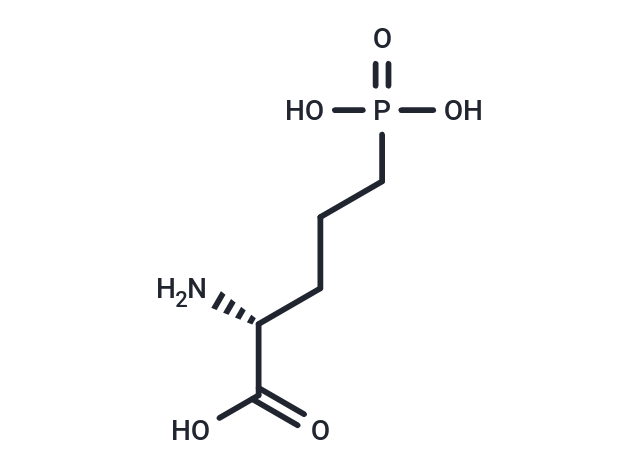Shopping Cart
Remove All Your shopping cart is currently empty
Your shopping cart is currently empty
D-AP5 (D-APV) is an NMDA receptor antagonist.

| Pack Size | Price | USA Warehouse | Global Warehouse | Quantity |
|---|---|---|---|---|
| 1 mg | $30 | In Stock | In Stock | |
| 2 mg | $40 | In Stock | In Stock | |
| 5 mg | $64 | In Stock | In Stock | |
| 10 mg | $113 | In Stock | In Stock | |
| 25 mg | $239 | In Stock | In Stock | |
| 50 mg | $477 | In Stock | In Stock | |
| 1 mL x 10 mM (in DMSO) | $62 | In Stock | In Stock |
| Description | D-AP5 (D-APV) is an NMDA receptor antagonist. |
| Targets&IC50 | NMDA:1.4 μM(kd) |
| In vivo | D-AP5 is an NMDA receptor antagonist. Chronic intraventricular injection of D-AP5 can cause dose-dependent parallel damage to spatial learning and long-term enhancement (LTP) in vivo. When preventing spatial learning, the concentration of D-AP5 in the brain cannot cause any measurable sensorimotor disturbances. Compared with the test, D-AP5 infusion will cause a gradual decrease in swimming speed. D-AP5 causes sensorimotor disturbances in space tasks, but gradually deteriorates due to the inability of animals to learn. Rats treated with D-AP5 showed spatially dependent delay-dependent defects in the delayed matching placement protocol of the water maze. |
| Synonyms | D-APV, D-2-Amino-5-phosphonovaleric acid |
| Molecular Weight | 197.13 |
| Formula | C5H12NO5P |
| Cas No. | 79055-68-8 |
| Smiles | C(C[C@H](C(O)=O)N)CP(=O)(O)O |
| Relative Density. | 1.529 g/cm3 |
| Color | White |
| Appearance | Solid |
| Storage | Powder: -20°C for 3 years | In solvent: -80°C for 1 year | Shipping with blue ice/Shipping at ambient temperature. | |||||||||||||||||||||||||||||||||||
| Solubility Information | Ethanol: < 1 mg/mL (insoluble) H2O: 42.92 mg/mL (217.72 mM), Sonication is recommended. | |||||||||||||||||||||||||||||||||||
Solution Preparation Table | ||||||||||||||||||||||||||||||||||||
H2O
| ||||||||||||||||||||||||||||||||||||
| Size | Quantity | Unit Price | Amount | Operation |
|---|

Copyright © 2015-2025 TargetMol Chemicals Inc. All Rights Reserved.